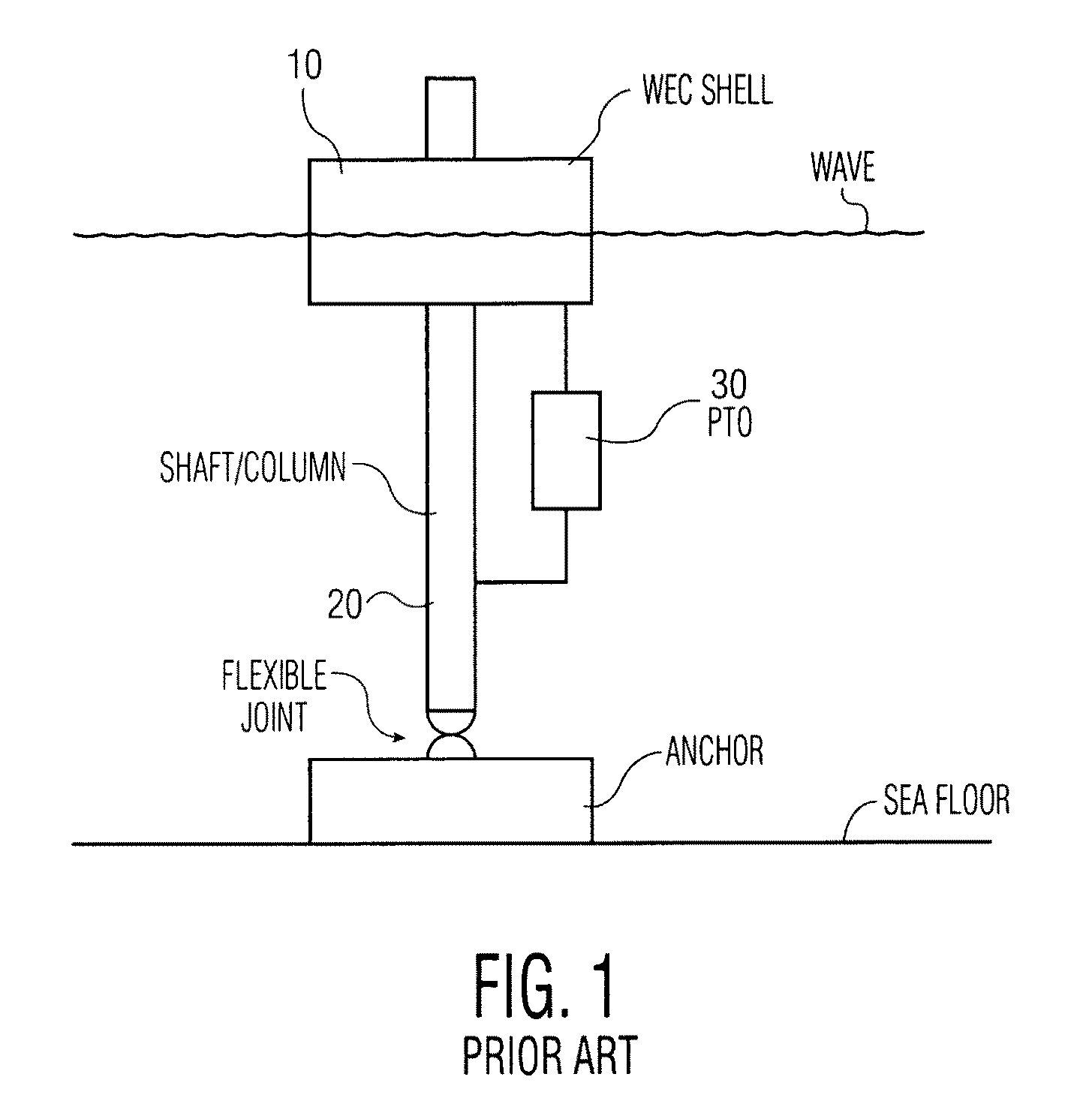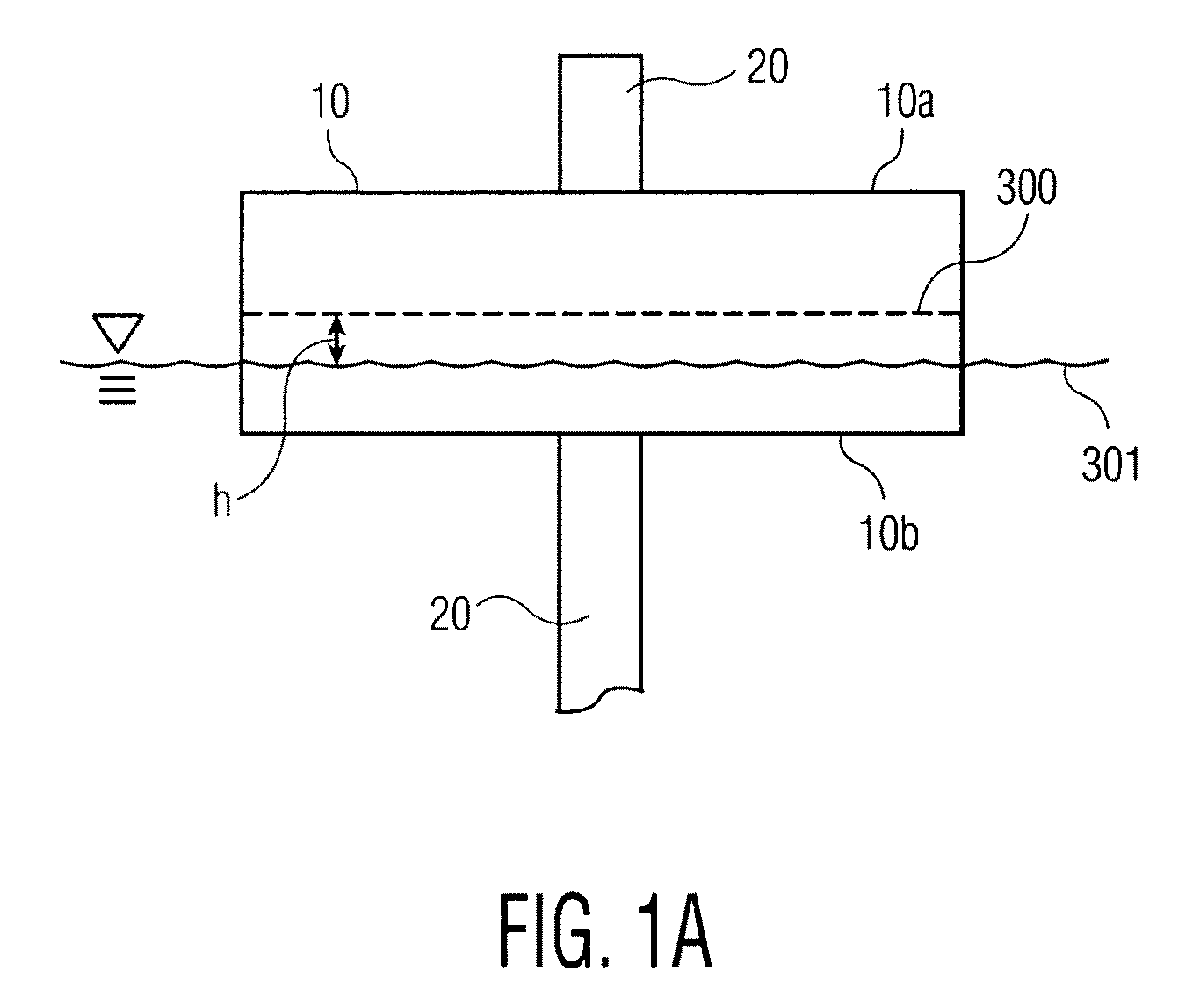Float for wave energy converter (WEC)
a wave energy converter and float technology, applied in water-power plants, machines/engines, mechanical equipment, etc., can solve the problems of affecting the power generation capacity of the float, and affecting the survivability of the float, so as to improve the protection against wave slam and excessive bending moments, and the effect of improving the power generation capacity
- Summary
- Abstract
- Description
- Claims
- Application Information
AI Technical Summary
Benefits of technology
Problems solved by technology
Method used
Image
Examples
Embodiment Construction
[0030]A solution embodying the invention, aimed at reducing the impact of water slamming while maintaining power production includes a float for a WEC, where the underside of the float, intended to be impacted by the waves, is wedge shaped (e.g., it is triangular in cross section with the apex of the triangle pointing away from the top surface of the float).
[0031]FIGS. 3, 4A and 4B show a float 110 embodying the invention which has a central opening so the float can move up and down relative to a central shaft or spar 20. FIGS. 4A and 4B are different isometric views of the top and underside of the float whose cross section, as shown in FIG. 3, may be represented as having two triangular / wedge sections, 120a, 120b. The float 110 extends radially and symmetrically about the shaft 20 which defines a central axis of symmetry of the WEC. The float 110 has: (a) an upper section having a toroidal configuration, of height H1, with the toroid extending along the horizontal (x) direction (th...
PUM
| Property | Measurement | Unit |
|---|---|---|
| acute angle | aaaaa | aaaaa |
| acute angle | aaaaa | aaaaa |
| depth | aaaaa | aaaaa |
Abstract
Description
Claims
Application Information
 Login to View More
Login to View More - R&D
- Intellectual Property
- Life Sciences
- Materials
- Tech Scout
- Unparalleled Data Quality
- Higher Quality Content
- 60% Fewer Hallucinations
Browse by: Latest US Patents, China's latest patents, Technical Efficacy Thesaurus, Application Domain, Technology Topic, Popular Technical Reports.
© 2025 PatSnap. All rights reserved.Legal|Privacy policy|Modern Slavery Act Transparency Statement|Sitemap|About US| Contact US: help@patsnap.com



